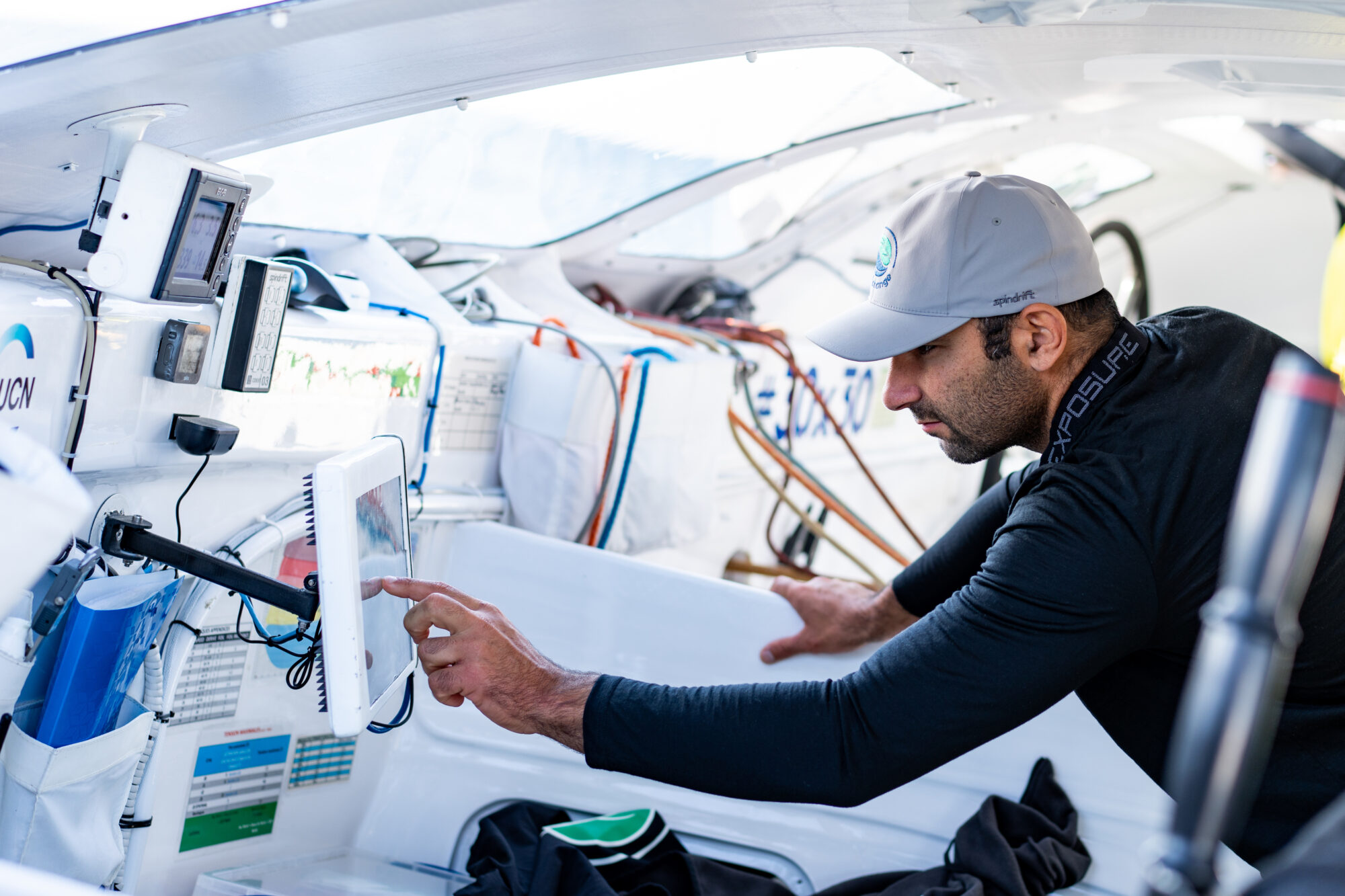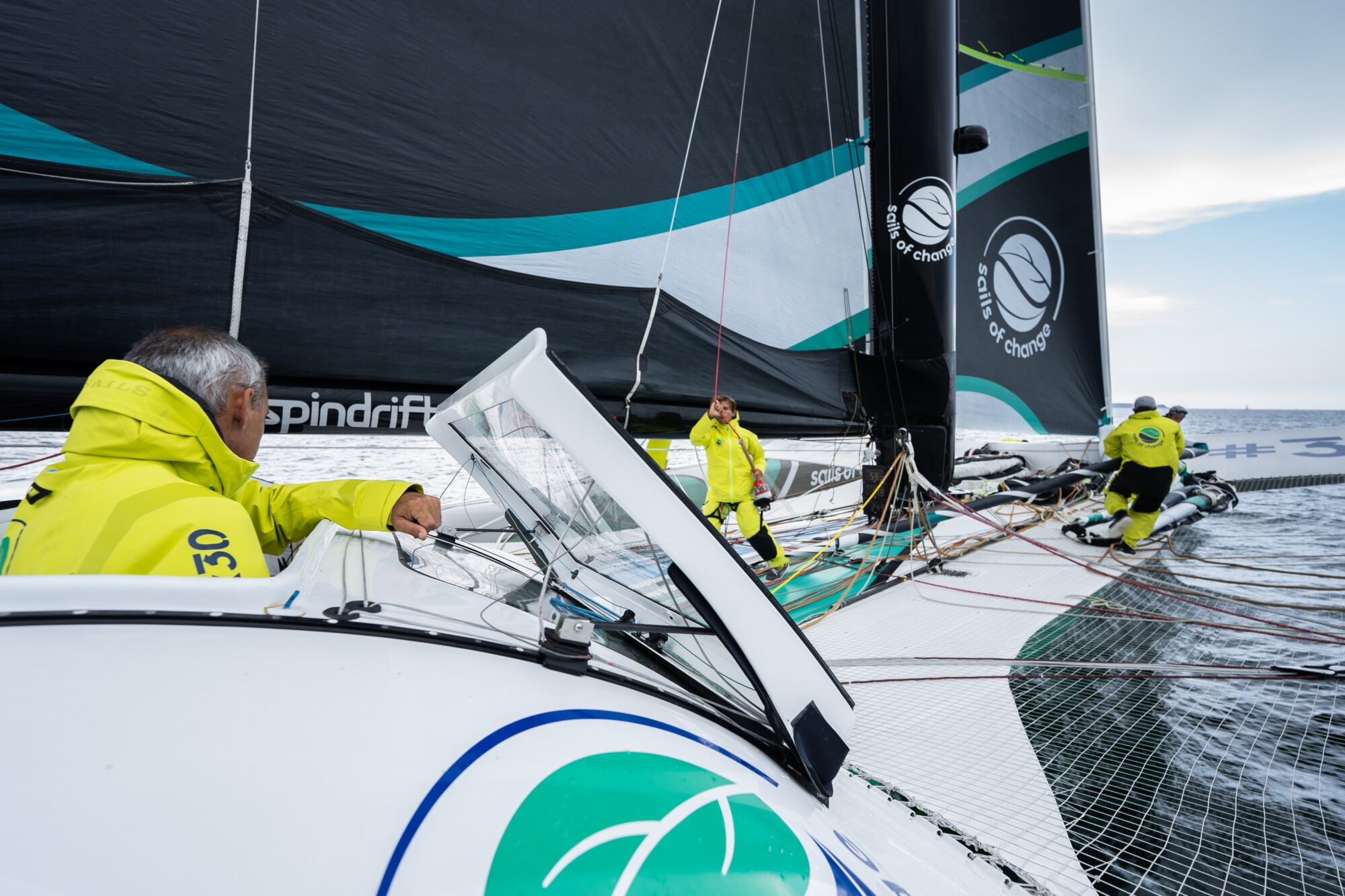

‘Code red’ has been trending for Yann Guichard and Dona Bertarelli’s team onboard the maxi-trimaran Sails of Change since they went on stand-by on 24 October last year. Jean-Yves Bernot, the shore-based router, throws some light on what has been an unprecedented weather situation.

The team – on its fourth Jules Verne Trophy record attempt – moored the trimaran in Brest on 10 November to be able to respond quickly to a weather window and subsequent code change, and there it has remained, tugging on its lines. ‘Rouge sur rouge, rien ne bouge’ goes the adage, loosely translated as ‘Red over red, no movement ahead’. The stand-by code has not changed colour since last autumn.
“Last year, we didn’t start although certain scenarios could have been tempting, even though the subsequent transitions were not promising. This year, there has not been one day that left room for doubt,” said Jean-Yves.
Overall, there are two scenarios that are favourable for a Jules Verne Trophy record attempt : setting off on the tail-end of an Atlantic low pressure, using the north-westerly shift to head south in strong downwind conditions. Or setting off on the back of a winter high pressure system stuck over Europe, synonymous with favourable easterly wind conditions. “This year, the low pressures haven’t shown any clear shifts with the wind remaining in the South-West,” explained Jean-Yves. “And when the cold snap hit France at the beginning of December, the anticyclone was positioned in such a way that it blocked the route to the Moroccan coast. Most importantly, these weather patterns have been long-lasting. In meteorology, we call them blocking patterns.”

To have a hope of breaking the record set by IDEC Sport (40 days, 23 hours, 30 minutes), the team knows that it must be very punchy at the start of the Atlantic phase, and then nail all the transitions until they get down to the first of the southern lows. “IDEC Sport made great time in the Indian Ocean, had a decent Pacific experience, and an excellent finish,” continued Jean-Yves. “The section that can really be improved on timewise, is the Atlantic. If you are two days late to the Cape of Good Hope, you’re done, game over. We have run 2,000 simulations, and four of them went through to the finish!”
In short, there is no point in setting out to tackle such a demanding record with the only certainty being a very unfavourable start. The question is how long does the Sails of Change team wait? While there is no cut-off date currently in place, ultimately the cycle of the seasons will dictate. Putting aside the fact that the nights will get longer in the high latitudes from February onwards, the Sails of Change router warns of the dangers of the Southern Ocean in the southern hemisphere’s autumn months. “It’s like comparing the situation at home between the end of September and the end of October, it’s not the same atmosphere at all. In the South, from mid-February onwards, the winds are so strong that you can’t sail a multihull at its optimal speed anyway.”
A few weeks remain in this complex waiting game, the outcome of which ultimately lies with Mother Nature. Yann Guichard, owner and skipper of the maxi-trimaran Sails of Change explains : “The stand-by of the maxi Sails of Change is planned until the 15th of February, date beyond which it is more complex to leave because of the end of the summer and the systems of depression in the Great South. We have a window of a little more than a month ahead of us, we remain very optimistic because the situation can change.”
Notifications